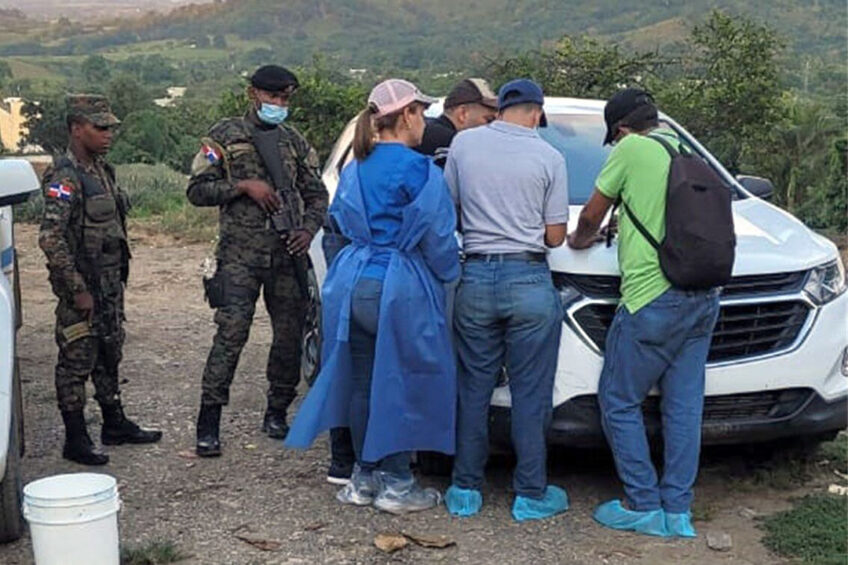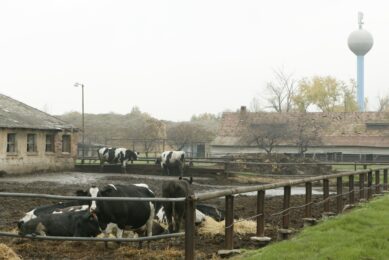ASF Dominican Republic: Smaller pork producers take the blow

As a clearer picture emerges about the seriousness of the African Swine Fever situation in the Dominican Republic, 1 conclusion stands. Up until now, the country’s smaller producers are hit hardest.
Officials in the Dominican Republic have called on (backyard) producers to refrain from making and sharing footage and pictures about the African Swine Fever. Yet the materials do trickle through of scenes identical to those of countries in Asia and Eastern Europe. Sick finisher pigs huddled together, dead specimens both inside and outside farm buildings, shovels removing carcasses or digging holes and many people wearing protective suits. And what’s most confronting: the faces of desperate producers, who have lost their source of income.
The situation looks grim for the Dominican Republic’s smaller backyard producers. Feed prices had already been high throughout the year, the country was already in a fight with Classical Swine Fever (CSF) virus, and the recent outbreak of ASF is just the next blow.
Situation of ASF in Dominican Republic
The latest known official data shared by the Dominican authorities have mentioned outbreaks in 14 of the 32 provinces, see also map above. The first 2 confirmed states were Monte Cristi and Sánchez Ramírez – in the latter cullings of 17,000 pigs have already been reported. Next, also the provinces Hermanas Mirabal, Santiago, San Juan, the National District, Elías Piña, La Vega, Monte Plata, San Pedro de Macorís, Espaillat, Duarte, Dajabón and Santiago Rodríguez were officially identified as being (partly) infected.
According to figures by the Dominican ministry of agriculture, the Dominican Republic has a pig population of 1.9 million animals. The country’s economic editorial title El Dinero calculated that together they counted for a monthly production of 7.3 million kg of pork in 2020. Domestic production takes care for roughly 70% of the Dominican pork consumption, with the additional 30% being imported from the USA. In the country both large commercial swine farms can be found as well as quite a lot of smaller producers with relatively low levels of biosecurity. The picture emerging in Dominican media is that ASF so far has mostly been found on smaller (backyard) farms.

Optimism despite the crisis
Even though the true extent of the spread will most likely become clearer later, there are definitely regions in the Dominican Republic where ASF has not protruded (yet). Rafael Fontanillas owns a swine farm and small feed mill near the city San Cristóbal in the province with the same name, about 20 km south west of the capital Santo Domingo. Speaking to Pig Progress he said he hadn’t heard of there being ASF in the province.
Fontanillas currently has 25 sows, 2 boars and 70 grow-finish pigs. The breeding animals have been a very recent investment, he explained. “I used to buy (weaner pigs, ed.) from other producers and then sell them at 95-105 kg, just getting them fattened. But I changed because they were raising the prices for the little piggies.”
Selling weaner pigs provides a more reliable income momentarily, he said. As prices for feed like corn and soy skyrocketed in recent months, and since the ASF situation started to create problems, prices for pig meat dropped from € 2.25 to € 0.50/kg. “Right now, the market is for the butcher.”

Location of current ASF outbreaks
Fontanillas sees the location of the current outbreaks as a problem. “The vastness of the problem is that the pig breeding and reproduction centre is currently being hit by ASF.” Centrally located provinces like e.g. Santiago but also La Vega, he said, are the “Iowa” of the Dominican Republic. Even a lockdown of those provinces could have far-reaching consequences.
He applies a lockdown on his own farm. “A lockdown means that nobody gets in and nobody gets out. My employees cannot go out. If they want something, they order it from the supermarket and they will deliver whatever they want. In our cases, the trucks don’t get in close to the farm. It will stay far and be disinfected.”
Despite the crisis situation, he calls himself an optimist. Asked whether he would start over again in case ASF would force him to stop, he said, “I would totally start over as long as the government helps us with a lower rate to be able to acquire animals from scratch.”

Knowledge about ASF is own responsibility
Hope despite uncertainty is the message that is also shared by Jose Israel Brito Madera, veterinarian and pig producer from Santiago Rodríguez province, in the centre of the Dominican Republic. On his farm he has 125 sows and about 600 finisher pigs. Talking to Pig Progress he said, “In the vicinity of our farm, no case has yet been registered, which reassures us a bit, although the situation in general is a big problem for the entire sector.”
The outbreaks were a surprise for the sector, Brito said, even though the Dominican authorities did inform the industry about the risk of this virus going on elsewhere in the world. He said, “They have informed about the risk, yet I believe that it is the responsibility of each individual producer to document as much as possible.”
Asked what he would do if his farm had to be depopulated, Brito was very clear. “For 100% I would start anew. The situation now doesn’t look to end well. Yet we are a family that has lived from this business for over 25 years. We will just start all over again.”
Economic consequences due to ASF
Brito is right in assessing that the situation doesn’t appear optimistic right now. The military and the police have got involved in helping to test pigs and if necessary depopulate smaller farms. Yet politicians have already been calling for strong measures. For instance Quique Antún, the president of the Reformed Social-Christian party (PRSC) launched a plea for taking “drastic measures” to avoid further spread, to avoid grave economic consequences for the country.
Moment and route of entrance of ASF virus
One major aspect of controlling the disease is finding out where the virus came from. The first documented outbreak dates from July 1 in Monte Cristi province at just over 20km from the border with Haiti. Official confirmation has not been given yet, but in correspondence with contacts in the Dominican Republic a picture emerges that it is genotype II, which means that it is the same as in Asia and Eastern Europe – and not the same genotype that was in the Dominican Republic 40 years ago.

It is not the first time that ASF was found in the Dominican Republic. The virus also emerged 40 years ago. How did it go back then?
That again means that the virus must have entered the island Hispaniola in recent months. The location of the first outbreak is therefore alarming in more than one way. Haiti is one of the poorest countries in the world and does not have a sophisticated veterinary infrastructure either. The fact that so far no reports of ASF have come from Haiti, therefore may not mean a lot.
On the contrary – the virus might have even come from Haiti, and if that is not the case, the smaller farms in that country may very likely be the next to fall victim to the virus.











